All Images
News Release 17-071
NSF EPSCoR awards new projects to help understand connections between genes and organisms' characteristics
New awards focus on genotype-to-phenotype relationship
This material is available primarily for archival purposes. Telephone numbers or other contact information may be out of date; please see current contact information at media contacts.
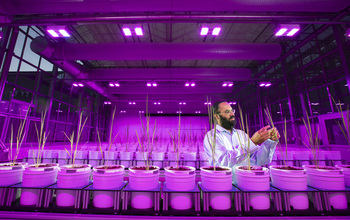
The University of Nebraska-Lincoln's project focuses on ensuring global food security by improving crop resilience. Principal investigator Harkamal Walia checks the progress of a rice plant growing in the Lemna Tech High Throughput Phenotyping facility at the Greenhouse Innovation Center on the Nebraska Innovation Campus. The magenta glow is caused by custom LED grow lights. The facility is an automated system which moves the plants via conveyor belts and automatically waters them and then records their growth daily using various cameras and instruments.
Credit: University Communication / University of Nebraska-Lincoln
Download the high-resolution JPG version of the image. (1.8 MB)
Use your mouse to right-click (Mac users may need to Ctrl-click) the link above and choose the option that will save the file or target to your computer.
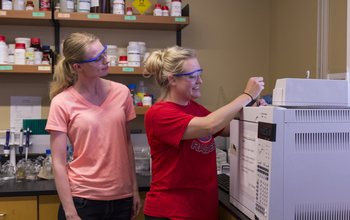
Students in Rajesh Kumar Sani's lab at the South Dakota School of Mines and Technology. Each of the new EPSCoR awards will require recipient institutions to invest in developing a highly skilled, diverse workforce.
Credit: South Dakota School of Mines and Technology
Download the high-resolution JPG version of the image. (8.5 MB)
Use your mouse to right-click (Mac users may need to Ctrl-click) the link above and choose the option that will save the file or target to your computer.
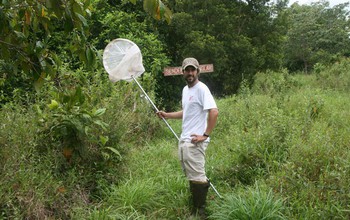
Riccardo Papa, of the University of Puerto Rico -- Rio Piedras, in the field. The university's project uses butterfly wing color patterns as a mechanism to study genotype-phenotype relationships in Heliconius butterflies.
Credit: Riccardo Papa, University of Puerto Rico, Department of Biology
Download the high-resolution JPG version of the image. (2.5 MB)
Use your mouse to right-click (Mac users may need to Ctrl-click) the link above and choose the option that will save the file or target to your computer.
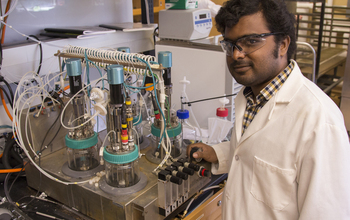
The South Dakota School of Mines and Technology's project focuses on methane cycling.
Credit: South Dakota School of Mines and Technology
Download the high-resolution JPG version of the image. (12.1 MB)
Use your mouse to right-click (Mac users may need to Ctrl-click) the link above and choose the option that will save the file or target to your computer.
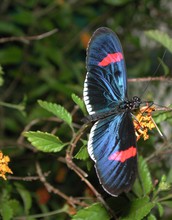
The University of Puerto Rico -- Rio Piedras' project uses butterfly wing color patterns as a mechanism to study genotype-phenotype relationships in Heliconius butterflies.
Credit: Riccardo Papa, University of Puerto Rico, Department of Biology
Download the high-resolution JPG version of the image. (552.0 KB)
Use your mouse to right-click (Mac users may need to Ctrl-click) the link above and choose the option that will save the file or target to your computer.
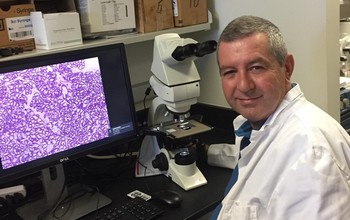
The University of South Carolina's Hippokratis Kiaris at work in his laboratory. Kiaris is principal investigator for a collaborative project involving the University of South Carolina, Claflin University and Auburn University that aims to dissect the genomic basis of stress response in mammals.
Credit: University of South Carolina
Download the high-resolution JPG version of the image. (510.6 KB)
Use your mouse to right-click (Mac users may need to Ctrl-click) the link above and choose the option that will save the file or target to your computer.
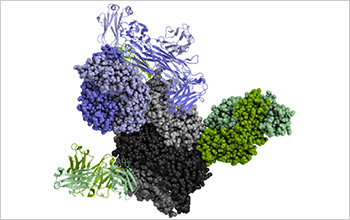
The University of Idaho's project looks at how changes in amino acids lead to changes in the characteristics of living organisms. The project focuses on protein biophysical models and uses a diverse set of experimental systems, molecular and mathematical modeling. In this figure, the neutralization of infection from respiratory syncytial virus depends on antibodies (blue, green) binding to viral proteins (gray). The project's research could improve the ability to use computer simulation to predict amino acid changes that will disrupt antibody binding.
Credit: F. Marty Ytreberg, University of Idaho
Download the high-resolution PNG version of the image. (196.3 KB)
Use your mouse to right-click (Mac users may need to Ctrl-click) the link above and choose the option that will save the file or target to your computer.
